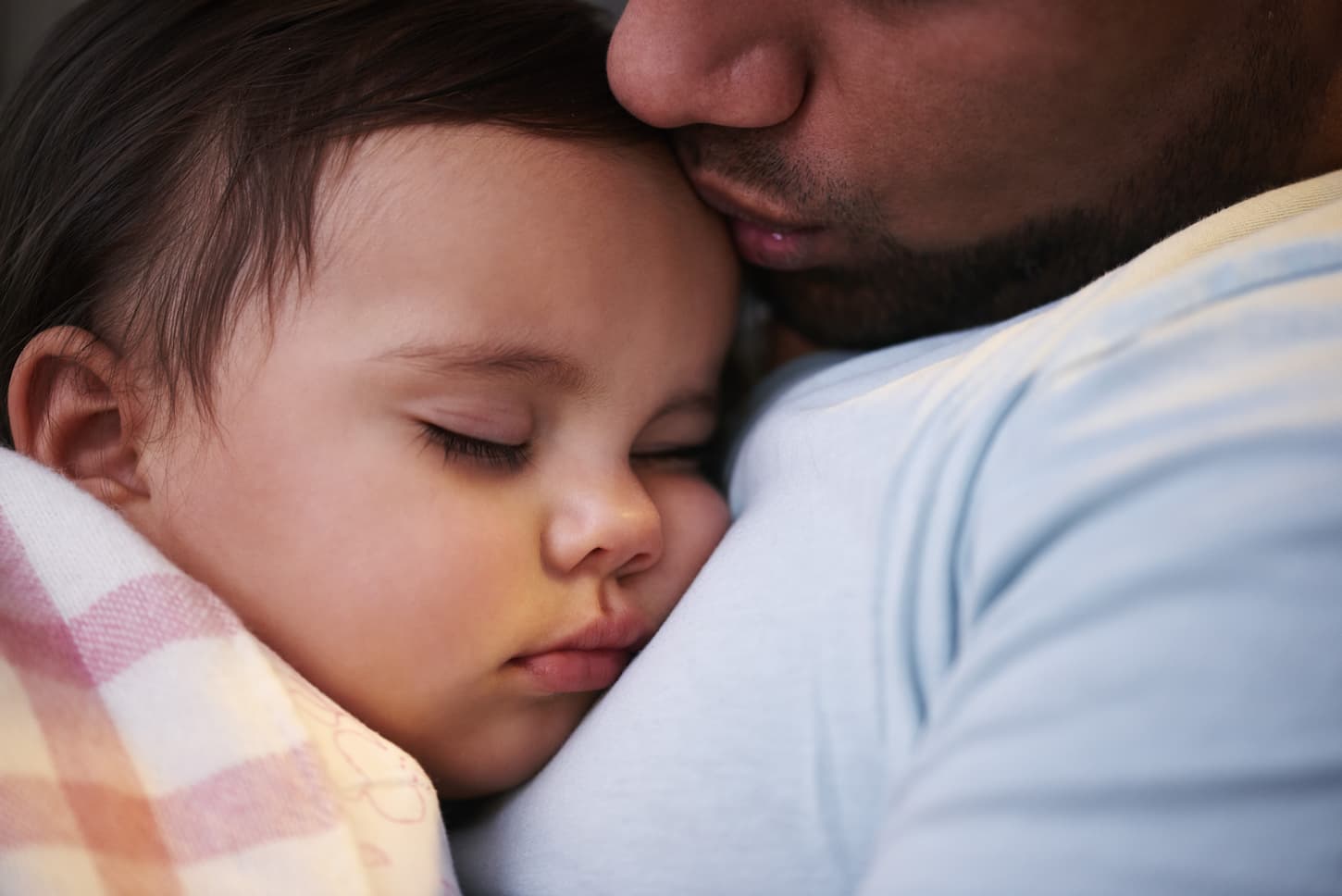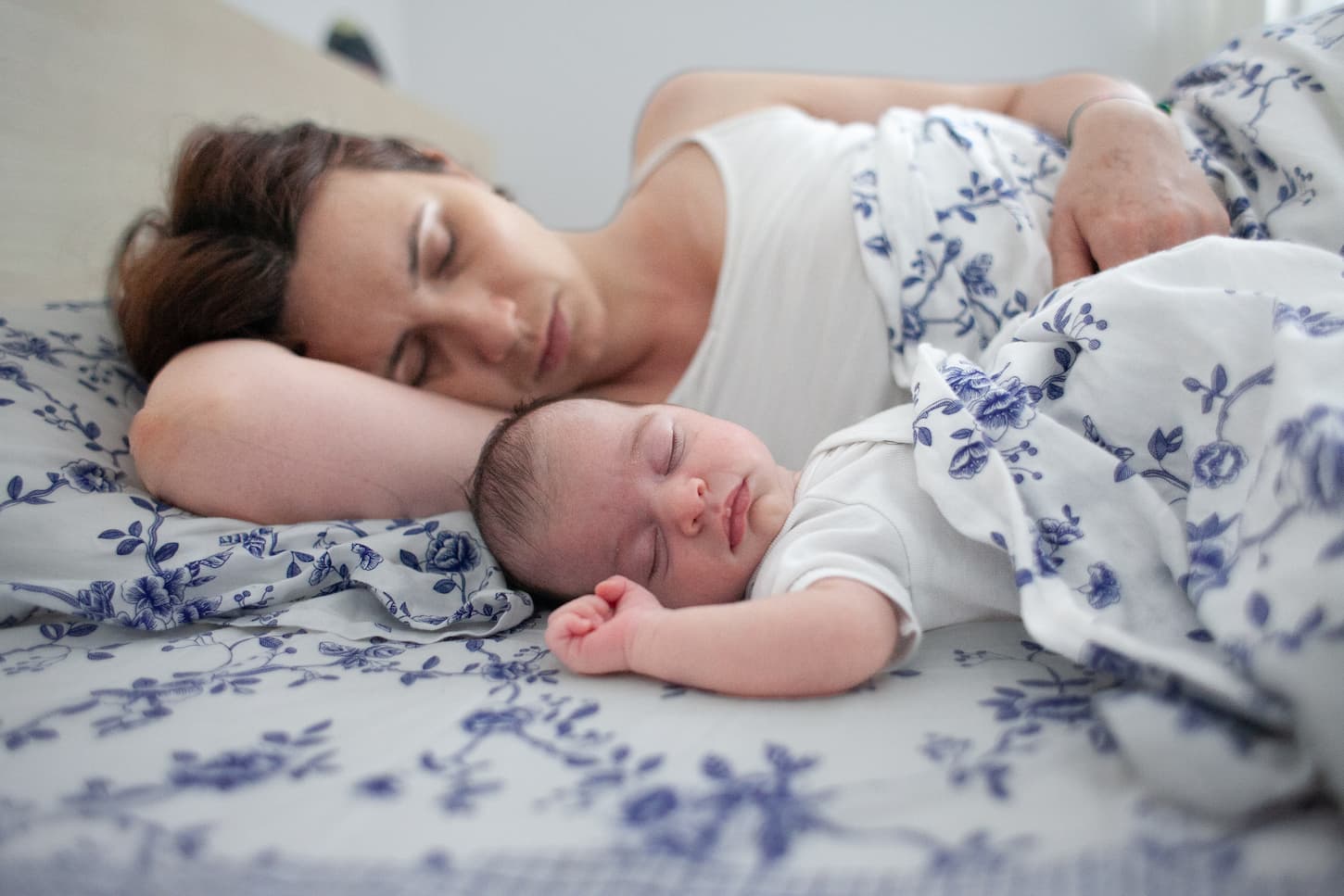Parenting can be difficult, and we often lose sleep over getting our little ones to sleep. Nowadays, some parents are investigating sleep training their babies so that they will get a good night’s rest. However, some parents are hesitant, and others don’t want to sleep train their babies.
Not all babies require sleep training. Parents can consult their pediatricians if they need help determining if their child falls into the approximately 20% of babies that shouldn’t or can’t sleep train or see if babies even need it. Many babies learn to sleep as they get older.
Most pediatricians agree that sleep training is safe as long as the baby is old enough and mature enough to do it. Parents should note their baby’s age and if they are ready to undergo sleep training before doing any training.
Parents should always wait for the pediatrician’s green light to play it safe when in doubt.

Will My Baby Sleep Through the Night Without Sleep Training?
A baby will not be able to sleep long hours through the night even with sleep training. Usually, a baby can sleep longer after they hit the 5-month mark even without sleep training. Having the baby sleep at the right time might be the only tricky part at this age.
However, babies will stop fighting the urge they have to sleep at this point, making it easier for them to fall asleep. If you decide not to sleep train them, or the baby seems incapable of learning how to sleep using this method, it’s completely fine.
The baby will eventually learn over time. For example, it takes a while for a baby to know the right time to fall asleep.
Mom tip: Not all babies learn to sleep better at 5 months. My children’s “magical age for sleep improvement” was 12 months.
Can Some Babies Not Sleep Train?
About 20% of babies do not do as well with sleep training. So, keep a close eye on them for any harmful effects of sleep training. Sleep training may not work well or at all for the baby if there are more adverse side effects than good, and the parents must stop it.
Some signs include the baby acting more stressed than usual. For example, a baby can act more clingy or distant.
However, it’s almost always a clever idea to at least attempt to sleep train a baby. You won’t ever know how they’ll handle it unless you try.
- Worst case scenario, you learn what doesn’t work.
- In the best case scenario, you learn to focus on healthy sleep habits and work towards improvement, even if it’ll take you longer.
And, it’s one way for the parent and child to get some shuteye in the evening.

Can Babies Learn to Self Soothe Without Sleep Training?
Babies will learn how to self-soothe eventually. It is a skill babies gain as they get older. Sleep training is not required to learn this skill. However, sleep training does help the process. While babies will learn this skill independently, that doesn’t mean we should leave them on their own.
If you don’t plan on sleep training your baby, plan on being there for the baby when they cry. If the baby wants comfort, it’s up to the parent to provide it until they are old enough to soothe themselves.
As babies grow older and sleep longer, they wake up less at night. They’ll only wake up if they need feeding, but otherwise, they will sleep for longer hours.
If they do wake up, if they are old enough, they will be able to soothe themselves to sleep with little to no noise.
Is it OK to Not Sleep Train Your Baby?
Sleep training is not required. While it can help many babies learn to sleep faster, it isn’t at all necessary for every family. There are numerous sleep training methods, so feel free to quit or try another methodology if one doesn’t work.
It’s a clever idea to try to sleep train babies, but it is fine to stop sleep training if it’s not working for the baby or their family. However, if parents feel that sleep training their child is too harsh or that the crying does not stop, please change the approach or find something better.
Sleep training is still studied today, and many parents have raised their children without sleep training. However, sleep training is not necessary. It’s up to the parents to decide if it’s right for their baby.
Is it Necessary to Sleep Train a Baby?
While sleep training is not necessary, both parents and pediatricians recommend it. Sleep training is generally more for the parents than the child. Babies learn how to sleep longer independently, but there’s a limit to how long parents can keep going without sleep.
Sleep training is more beneficial to the parents’ physical and mental health than to the baby, although it does help overtired babies get back on track. While it does benefit the babies a little, a non-sleep-trained baby is lovely, too.
However, if you want more sleep, we recommend sleep training. There’s a gentle way of doing it aside from waiting for a baby to cry it out.

Can Sleep Training Harm Your Baby?
No peer-reviewed, scientifically published studies show concrete evidence that says sleep training will harm a baby. However, if parents are too harsh on their baby with sleep training, it will stress the baby out too much, no matter the method.
We recommend trying the most gentle way possible to sleep train the baby over other methods, although sometimes using a cry it out method is the only way forward for some families. And that’s okay, too, as long as it’s done within the guidelines of the existing sleep training methodology.
Parents and most doctors recommend that sleep training begins after four months of age and preferably after six months. It’s better to start with older babies instead of younger ones. However, the right time to start training a baby changes from infant to infant.
Some babies aren’t fit for sleep training until they are older. Before deciding to sleep train a baby, consult a pediatrician first.
Parents need to note that not all sleep training methods are suitable for all babies. Sometimes, sleep training isn’t proper for a baby at all.
Trial and error are vital to perfecting sleep training for a baby, but if all else fails, it’s best not to sleep train your infant.
What are some of the sleep training techniques you can use?
The five most popular methods for sleep training are the CIO (cry it out), the Ferber method (check and console), the “pickup and put down” method, the chair method, and bedtime fading.
To sleep train, there are a lot of techniques we can try out. Some parents even combine these techniques since it works for them and their infant. Here are a couple of methods that parents commonly use.
What is the cry it out technique (CIO)?
CIO is a technique that most people think is the only method for sleep training. In CIO, a parent puts the baby in their crib once the baby shows signs of fatigue. Usually, a parent will not pick up the baby unless it’s time to feed them or change a diaper.
If planning to use this technique for sleep training, prepare the baby for bed. Ensure they have a diaper change and have already eaten for the evening.
Be sure the crib is safe and secure before putting the baby down in their crib.
There’s obviously more to it than this, but that’s a whole other article. Actually, it’s enough for multiple articles. You can read our most popular articles on it here:
- Cry it Out Sleep Training: a Complete Guide with Q&A
- How Long Do You Let a Baby Cry It Out? (25 Things To Know)
- Why Do Sleep Trained Babies Still Cry? What to Do!
- Can You Let a Baby Cry It Out While Swaddled?
What is the Ferber method/ check & console?
This method is like the CIO technique. However, there are more allowed check-ins with the infant instead of only checking on them during feeding time. In addition, parents can check on their babies more often after putting them in the crib with the Ferber method.
Parents can do the first check-in after the first three minutes. Then they can do the next one after five minutes, then ten, and so on.
With this method, parents can reassure the baby they are present and check in on them by saying a few words. However, they are not allowed to linger in the baby’s room.
Again, this is just the quick version. For the full method, make sure you read our article: The Beginner’s Guide to the Ferber Method of Sleep Training.
What is the pick-up, put-down technique?
Some parents combine this method with the Ferber method. For example, they pick up their child if they catch the child crying during routine check-ins and stay until the child settles, and then they put the baby back down.
Some might think that this defeats the entire purpose of sleep training, but they don’t understand how to do it. This technique allows the parent to have physical contact with their baby.
However, they must put the baby down once they settle. At this point, the parents can leave the room.
You can read more about the gentler methods, including the pick-up, and put-down method, in our article here: What is Gentle Sleep Training (Everything You’ve Wondered).
What is the chair method?
Put the baby back in their crib for the night, wait and sit in a chair by the crib. Once they are asleep, they leave and come back to check on the baby from time to time.
Whenever they cry, sit by them, and wait for them to settle. Then, slowly move the chair further back every evening so your baby will get used to you being at a further distance.
While this is a technique that some parents use and find successful, many doctors say that this technique is confusing for most babies.
Again, this method is covered in our article What is Gentle Sleep Training (Everything You’ve Wondered).
What is bedtime fading?
Bedtime fading is a method to gradually shift a baby’s sleeping schedule to the desired time for the parents’ benefit. Slowly move up their bedtime by 15 minutes each night until you reach the expected time at their usual bedtime.
Combine bedtime fading with other gentle sleep training techniques for the best results.
How Can I Successfully Sleep Train My Baby?
Establishing a set routine and focusing on healthy sleep habits and hygiene are crucial for sleep training. The CIO method, the Ferber method (check and console), the pickup and put down method, the chair method, and bedtime fading are all good methods.
Sleep training will be tough for both parents and the baby. Remember that using patience and exploring different methods is a clever idea to get the correct technique to sleep train a baby.
Don’t be afraid to explore and change methods if they aren’t working. There are so many other methods to try and combine.
However, if sleep training doesn’t work, you can bail out of the training altogether. It’s better for the parents and the child.
Sleep training is a team effort that all household members should make. However, parents or caregivers need to understand that sleep training will take up a lot of time, especially in the initial stages.
Parents and caregivers must also stick to proper schedules.
It’s crucial to establish a routine for a baby’s bedtime. Having a good routine before bed will let the baby know it’s time for sleep.
Keep calm and be confident that your family can get through this. A baby notices their parents’ emotions. So, it’s essential and beneficial to keep yourself as calm as possible.
If a parent is confident throughout the ordeal, it will be easier for the baby to notice the emotion and feel relaxed.
How Long Does Sleep Training Take?
Quite a few babies take about 3-4 days to get sleep trained. However, this is still a case-to-case situation. Some babies will take a little longer to sleep train or cannot go through sleep training.
If you’re doing a method that uses crying, make sure you read our article on how long a baby takes to learn to sleep using crying.
When should I consult a doctor regarding sleep training?
Let the baby’s pediatrician know about a decision to sleep train before it happens. Many pediatricians can guide parents through the process, though not all pediatricians are familiar with exact methodologies. Pediatricians can advise if a baby is old, mature, and healthy enough to sleep train.
In addition, the doctor will also tell us if our baby shouldn’t undergo sleep training. Never hesitate to consult your child’s doctor regarding their health. Keep them updated so they know how to advise you.

Key Takeaways and Next Steps
Not every baby needs to be sleep trained, and that’s okay! Variety is the spice of life – and not everyone likes spices. Clear as mud, right?
In any case, not every baby needs to be sleep trained. Not every baby can be sleep trained. However, the vast majority of babies (approximately 80%) can be successfully sleep trained, but only if needed.
So if you aren’t 100% sure that your baby needs sleep training yet? Don’t do it. Focus on what’s working. Perhaps snuggling to sleep works for you. Great. Do that!
But if you’re exhausted beyond all reason, and you are in desperate need of sleep ASAP? Then sleep training is worth trying. Because, in a worst-case scenario, you find out that your baby is in that 20% of children who can’t (or won’t) successfully sleep train, and you’re still right where you are.
But in a best-case scenario? Everyone gets better sleep, and everyone starts feeling tons better.
In any case, before you decide, go give this article I wrote a read next: When to Start Sleep Training: a Month-by-Month Guide. That way, you’ll find solid, science-based recommendations and my own personal insights no matter what age your baby is.
Resources
Learning about parenting or sleep training techniques is important to learn from various reputable sources. These are the sources used in this article and our research to be more informed as parents.
- Doucleff, Michaeleen. “Sleep Training Truths and What Science Can and Can’t Tell Us about Crying it Out.” Npr.Org, 15 July 2019, choice.npr.org/index.html?origin=https://www.npr.org/sections/health-shots/2019/07/15/730339536/sleep-training-truths-what-science-can-and-cant-tell-us-about-crying-it-out.
- “When and How to Sleep Train Your Baby.” Cleveland Clinic, 3 May 2021, health.clevelandclinic.org/when-and-how-to-sleep-train-your-baby.
- “How to Sleep Train Your Baby.” What to Expect, 17 Feb. 2022, www.whattoexpect.com/first-year/sleep/sleep-training-baby/#duration.
- “Ten Reasons to Not Sleep Train Your Baby.” Sarah Ockwell-Smith, 29 Jan. 2021, sarahockwellsmith.com/2015/05/14/ten-reasons-to-not-sleep-train-your-baby.
- Villines, Zawn. “Self-Soothing Baby Techniques and Tips.” Medical News Today, 10 Feb. 2021, www.medicalnewstoday.com/articles/self-soothing-baby.
